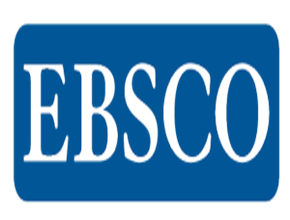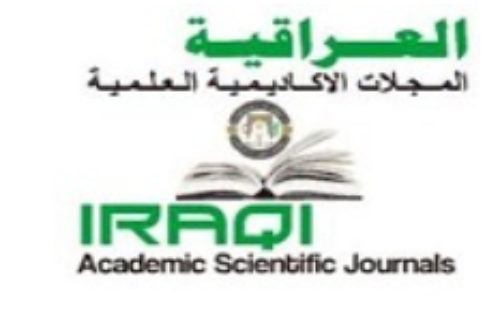Studying the relationship between mTOR activity and fertility hormones imbalances in polycystic ovary syndrome in Basra city
DOI:
https://doi.org/10.32792/utq/utjsci/v12i1.1284Keywords:
PCOS, mTOR, prolactin, testosterone, immunoregulationAbstract
Polycysticovariansyndrome (PCOS) is an endocrine-related condition that is world's leading cause of infertility affects women of reproductive age. The current study set out to investigate the effect of mTOR functions on PCOS women and its relation to fertility hormones. Total of 62 blood samples were collected, 42 of them were gathered from those who had recently been diagnosed with PCOS and 20 samples were collected from healthy women. The levels of mammalian target of rapamycin (mTOR) were measured using the (ELISA) technique while prolactin and testosterone were measured by Cobas e411. The study found a significant decrease in mTOR levels and a significant increase in prolactin and testosterone levels in women with PCOS compared to healthy women. Regarding age and BMI groups, no discernible variations were detected. This study concluded that dysregulation of mTOR is linked with PCOS, in addition, mTOR has a negative relationship with prolactin.
Received: 2024-07-28
Revised: 2024-09-10
Accepted: 2024-09-18
References
S. Siddiqui, S. Mateen, R. Ahmad, and S. Moin, “A brief insight into the etiology, genetics, and immunology of polycystic ovarian syndrome (PCOS).,” Journal of assisted reproduction and genetics, vol. 39, no. 11, pp. 2439–2473, Nov. 2022.
M. J. Khan, A. Ullah, and S. Basit, “Genetic Basis of Polycystic Ovary Syndrome (PCOS): Current Perspectives.,” The application of clinical genetics, vol. 12, pp. 249–260, 2019.
B. Liao, X. Qi, C. Yun, J. Qiao, and Y. Pang, “Effects of Androgen Excess-Related Metabolic Disturbances on Granulosa Cell Function and Follicular Development.,” Frontiers in endocrinology, vol. 13, p. 815968, 2022.
C. Delcour, G. Robin, J. Young, and D. Dewailly, “PCOS and Hyperprolactinemia: what do we know in 2019?,” Clinical medicine insights. Reproductive health, vol. 13, p. 1179558119871921, 2019.
V. Bernard, J. Young, and N. Binart, “Prolactin - a pleiotropic factor in health and disease.,” Nature reviews. Endocrinology, vol. 15, no. 6, pp. 356–365, Jun. 2019.
F. Lopez-Vicchi, C. De Winne, B. Brie, E. Sorianello, S. R. Ladyman, and D. Becu-Villalobos, “Metabolic functions of prolactin: Physiological and pathological aspects.,” Journal of neuroendocrinology, vol. 32, no. 11, p. e12888, Nov. 2020.
L. Mastnak, R. Herman, S. Ferjan, A. Janež, and M. Jensterle, “Prolactin in Polycystic Ovary Syndrome: Metabolic Effects and Therapeutic Prospects,” Life, vol. 13, no. 11, 2023.
R. Azziz et al., “Polycystic ovary syndrome,” Nature Reviews Disease Primers, vol. 2, no. 1, p. 16057, 2016.
P. Touraine and V. Goffin, “Physiologie de la prolactine,” EMC - Endocrinologie, vol. 2, no. 1, pp. 50–76, 2005.
I. A. Abdelazim et al., “Elevated and diagnostic androgens of polycystic ovary syndrome.,” Przeglad menopauzalny = Menopause review, vol. 19, no. 1, pp. 1–5, Mar. 2020.
Y. Xu and J. Qiao, “Association of Insulin Resistance and Elevated Androgen Levels with Polycystic Ovarian Syndrome (PCOS): A Review of Literature.,” Journal of healthcare engineering, vol. 2022, p. 9240569, 2022.
J. Wang, T. Yin, and S. Liu, “Dysregulation of immune response in PCOS organ system,” Frontiers in Immunology, vol. 14, 2023.
V. Panwar et al., “Multifaceted role of mTOR (mammalian target of rapamycin) signaling pathway in human health and disease,” Signal Transduction and Targeted Therapy, vol. 8, no. 1, p. 375, 2023.
Z. Guo and Q. Yu, “Role of mTOR Signaling in Female Reproduction.,” Frontiers in endocrinology, vol. 10, p. 692, 2019.
A. L. Liu et al., “New insights into mTOR signal pathways in ovarian-related diseases: Polycystic ovary syndrome and ovarian cancer,” Asian Pacific Journal of Cancer Prevention, vol. 17, no. 12, pp. 5087–5094, 2016.
F. Wang et al., “Defective insulin signaling and the protective effects of dimethyldiguanide during follicular development in the ovaries of polycystic ovary syndrome,” Mol Med Rep, vol. 16, no. 6, pp. 8164–8170, 2017.
H. Zhang, Y. Zhang, Y. Han, F. Xue, X. Zhao, and X. Zhang, “[Activation and significance of the PI3K/Akt pathway in endometrium with polycystic ovary syndrome patients].,” Zhonghua fu chan ke za zhi, vol. 47, no. 1, pp. 19–23, Jan. 2012.
S. Huang and P. J. Houghton, “Targeting mTOR signaling for cancer therapy.,” Current opinion in pharmacology, vol. 3, no. 4, pp. 371–377, Aug. 2003.
Y. Sancak et al., “PRAS40 is an insulin-regulated inhibitor of the mTORC1 protein kinase.,” Molecular cell, vol. 25, no. 6, pp. 903–915, Mar. 2007.
W.-J. Song, X. Shi, J. Zhang, L. Chen, S.-X. Fu, and Y.-L. Ding, “Akt-mTOR Signaling Mediates Abnormalities in the Proliferation and Apoptosis of Ovarian Granulosa Cells in Patients with Polycystic Ovary Syndrome,” Gynecologic and Obstetric Investigation, vol. 83, no. 2, pp. 124–132, 2017.
H. Alam et al., “Follicle-stimulating hormone activation of hypoxia-inducible factor-1 by the phosphatidylinositol 3-kinase/AKT/Ras homolog enriched in brain (Rheb)/mammalian target of rapamycin (mTOR) pathway is necessary for induction of select protein markers of folli,” The Journal of biological chemistry, vol. 279, no. 19, pp. 19431–19440, May 2004.
Y. Li et al., “High fat diet-induced obesity leads to depressive and anxiety-like behaviors in mice via AMPK/mTOR-mediated autophagy.,” Experimental neurology, vol. 348, p. 113949, Feb. 2022.
F. Hu, Y. Xu, and F. Liu, “Hypothalamic roles of mTOR complex I: integration of nutrient and hormone signals to regulate energy homeostasis.,” American journal of physiology. Endocrinology and metabolism, vol. 310, no. 11, pp. E994–E1002, Jun. 2016.
M. J. Faddy, R. G. Gosden, A. Gougeon, S. J. Richardson, and J. F. Nelson, “Accelerated disappearance of ovarian follicles in mid-life: implications for forecasting menopause.,” Human reproduction (Oxford, England), vol. 7, no. 10, pp. 1342–1346, Nov. 1992.
E. Tufan, K. Elter, and F. Durmusoglu, “Assessment of reproductive ageing patterns by hormonal and ultrasonographic ovarian reserve tests.,” Human reproduction (Oxford, England), vol. 19, no. 11, pp. 2484–2489, Nov. 2004.
A. Shenta, K. Saud, and A. Al-Shawi, “Assessment the Correlations of Hormones, Lipid Profiles, Oxidative Stress, and Zinc Concentration in Iraqi Women with Polycystic Ovary Syndrome.,” Reports of biochemistry & molecular biology, vol. 9, no. 3, pp. 270–277, Oct. 2020.
M. Saei Ghare Naz, M. Mousavi, F. Mahboobifard, A. Niknam, and F. Ramezani Tehrani, “A Meta-Analysis of Observational Studies on Prolactin Levels in Women with Polycystic Ovary Syndrome.,” Diagnostics (Basel, Switzerland), vol. 12, no. 12, Nov. 2022.
L. Barrea et al., “Adherence to the Mediterranean Diet, Dietary Patterns and Body Composition in Women with Polycystic Ovary Syndrome (PCOS).,” Nutrients, vol. 11, no. 10, Sep. 2019.
K. E. Sharquie, A. A. Al-Bayatti, A. I. Al-Ajeel, A. J. Al-Bahar, and A. A. Al-Nuaimy, “Free testosterone, luteinizing hormone/follicle stimulating hormone ratio and pelvic sonography in relation to skin manifestations in patients with polycystic ovary syndrome.,” Saudi medical journal, vol. 28, no. 7, pp. 1039–1043, Jul. 2007.
R. Azziz, V. Black, G. A. Hines, L. M. Fox, and L. R. Boots, “Adrenal androgen excess in the polycystic ovary syndrome: sensitivity and responsivity of the hypothalamic-pituitary-adrenal axis.,” The Journal of clinical endocrinology and metabolism, vol. 83, no. 7, pp. 2317–2323, Jul. 1998.
M. Yesiladali, M. G. K. Yazici, E. Attar, and F. Kelestimur, “Differentiating Polycystic Ovary Syndrome from Adrenal Disorders.,” Diagnostics (Basel, Switzerland), vol. 12, no. 9, Aug. 2022.
P. Pinola et al., “Androgen Profile Through Life in Women With Polycystic Ovary Syndrome: A Nordic Multicenter Collaboration Study.,” The Journal of clinical endocrinology and metabolism, vol. 100, no. 9, pp. 3400–3407, Sep. 2015.
H. Bili, J. Laven, B. Imani, M. J. Eijkemans, and B. C. Fauser, “Age-related differences in features associated with polycystic ovary syndrome in normogonadotrophic oligo-amenorrhoeic infertile women of reproductive years.,” European journal of endocrinology, vol. 145, no. 6, pp. 749–755, Dec. 2001.
M. Jacewicz-Święcka and I. Kowalska, “Changes in Metabolic Profile in the Women with a History of PCOS-A Long-Term Follow-Up Study.,” Journal of clinical medicine, vol. 9, no. 10, Oct. 2020.
M. Hudecova et al., “Androgen levels, insulin sensitivity, and early insulin response in women with polycystic ovary syndrome: a long-term follow-up study.,” Fertility and sterility, vol. 95, no. 3, pp. 1146–1148, Mar. 2011.
M. Jacewicz-Święcka, S. Wołczyński, and I. Kowalska, “The Effect of Ageing on Clinical, Hormonal and Sonographic Features Associated with PCOS-A Long-Term Follow-Up Study.,” Journal of clinical medicine, vol. 10, no. 10, May 2021.
B. Ernst, M. Thurnheer, and B. Schultes, “Basal serum prolactin levels in obesity--unrelated to parameters of the metabolic syndrome and unchanged after massive weight loss.,” Obesity surgery, vol. 19, no. 8, pp. 1159–1162, Aug. 2009.
K. L. Gray, P. M. Clifton, and J. B. Keogh, “The effect of intermittent energy restriction on weight loss and diabetes risk markers in women with a history of gestational diabetes: a 12-month randomized control trial.,” The American journal of clinical nutrition, vol. 114, no. 2, pp. 794–803, Aug. 2021.
M. T. Stratton et al., “Four Weeks of Time-Restricted Feeding Combined with Resistance Training Does Not Differentially Influence Measures of Body Composition, Muscle Performance, Resting Energy Expenditure, and Blood Biomarkers.,” Nutrients, vol. 12, no. 4, Apr. 2020.
T. Moro et al., “Time-restricted eating effects on performance, immune function, and body composition in elite cyclists: a randomized controlled trial.,” Journal of the International Society of Sports Nutrition, vol. 17, no. 1, p. 65, Dec. 2020.
T. Moro, G. Tinsley, F. Q. Pacelli, G. Marcolin, A. Bianco, and A. Paoli, “Twelve Months of Time-restricted Eating and Resistance Training Improves Inflammatory Markers and Cardiometabolic Risk Factors.,” Medicine and science in sports and exercise, vol. 53, no. 12, pp. 2577–2585, Dec. 2021.
R. Pasquali, “Obesity and androgens: facts and perspectives.,” Fertility and sterility, vol. 85, no. 5, pp. 1319–1340, May 2006.
R. Pasquali and A. Gambineri, “Role of changes in dietary habits in polycystic ovary syndrome.,” Reproductive biomedicine online, vol. 8, no. 4, pp. 431–439, Apr. 2004.
Downloads
Published
License
Copyright (c) 2025 University of Thi-Qar Journal of Science

This work is licensed under a Creative Commons Attribution 4.0 International License.












